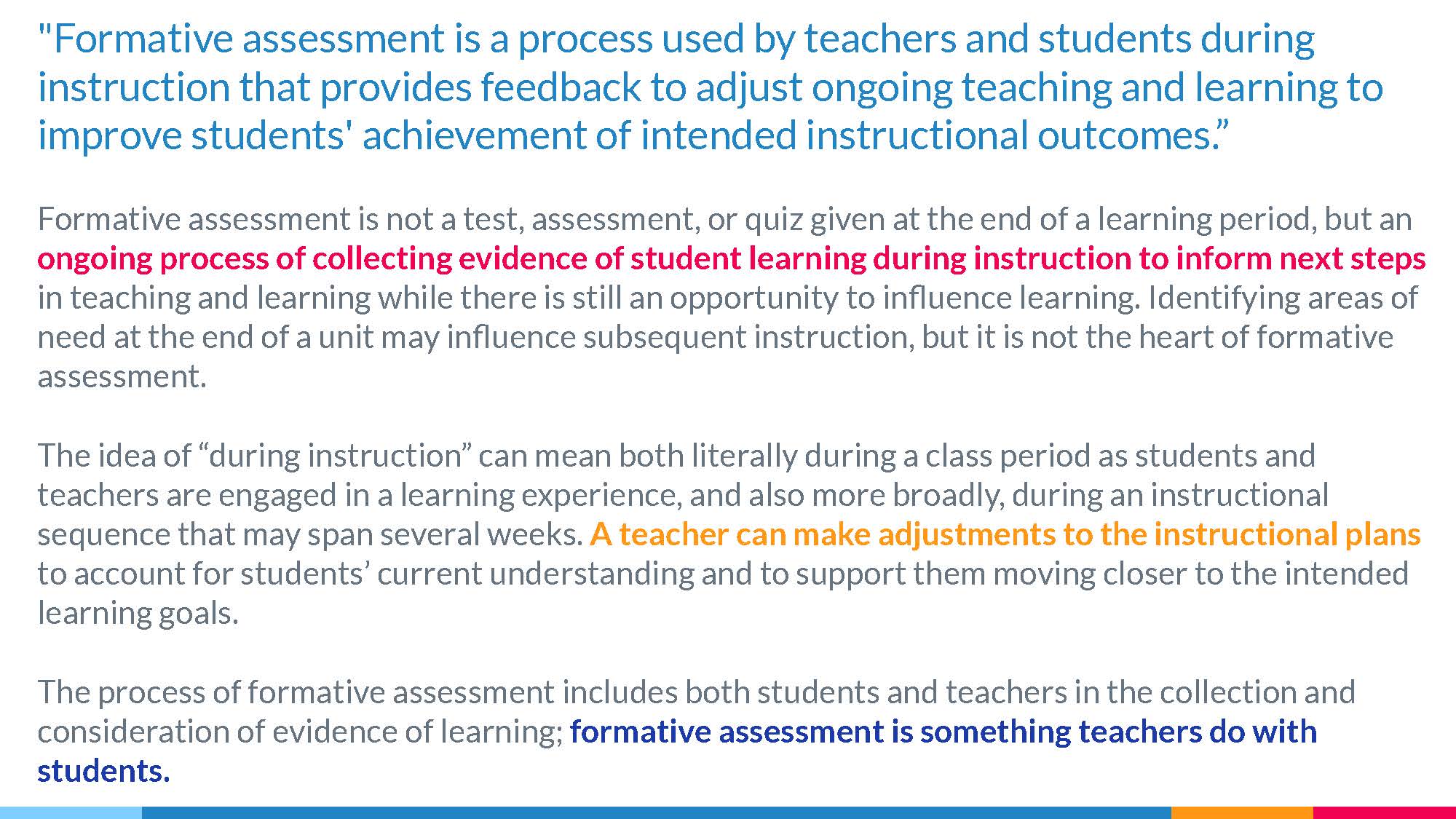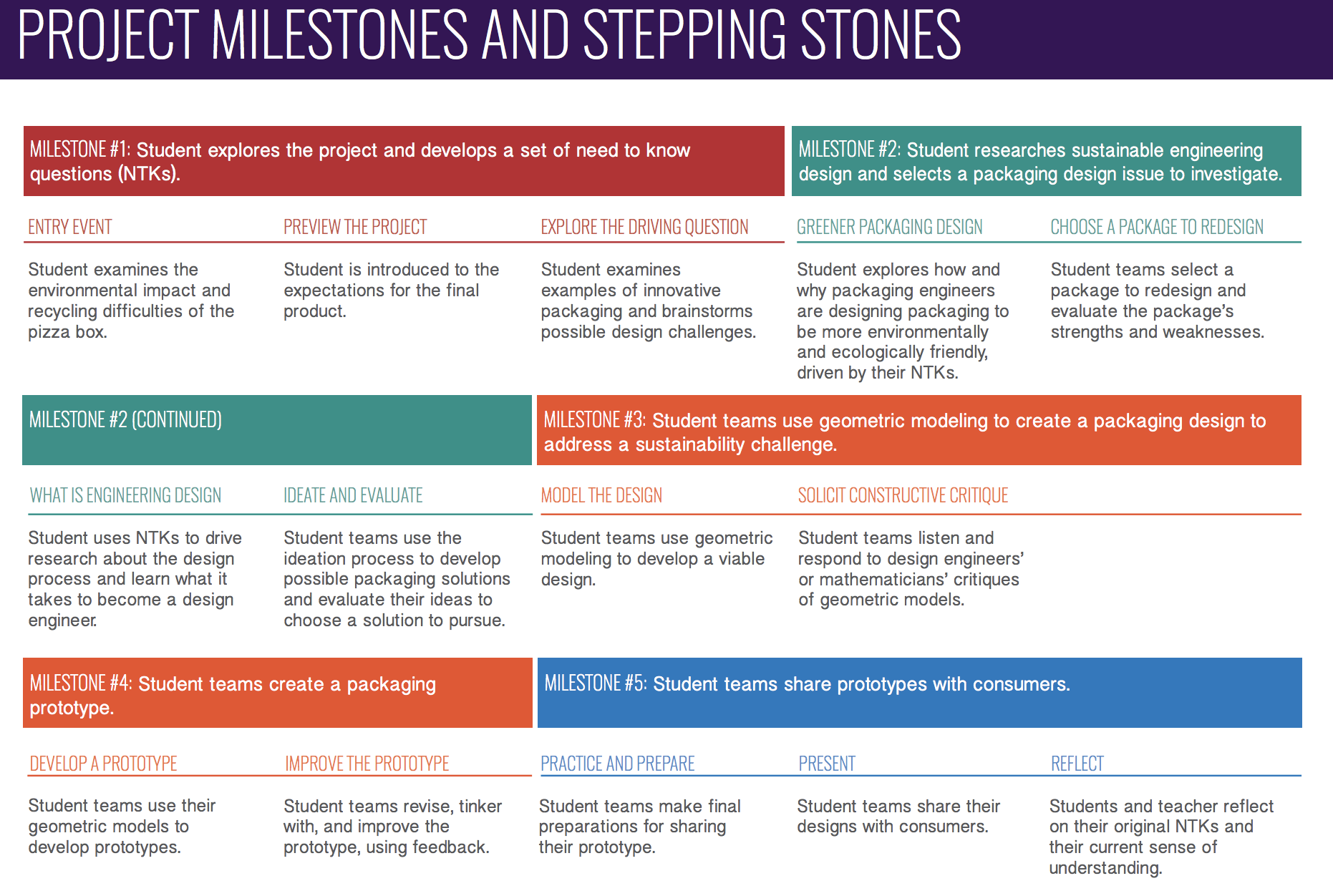Formative assessment and feedback loops are particularly important to performance assessment practices, since performance assessment often requires students to engage in more extended, self-directed, and complex demonstrations of their learning. Student success is dependent on their ability to get regular feedback to support their learning and refine their work products. A well-designed performance assessment plan lays out the formative steps leading up to the culminating performance assessment. As a part of your performance assessment design, you'll need to integrate formative assessment and feedback practices that help you uncover and address student learning needs related not just to content standards, but also larger transferrable skills.
Let's start by grounding ourselves in a Colorado’s definition of formative assessment. We like this one from The Formative Assessment for Students and Teachers (FAST) State Collaborative on Assessment and Student Standards (SCASS)
The concepts of formative assessment are captured in these three questions that students and teachers collaboratively answer together:

Deepen your understanding of strong formative assessment practice by engaging with at least 1 - 2 of the following resources. Pick the resources that best match your interest, areas where you want to advance your practice, and/or learning preferences.
- Formative Assessment: Examples in Practice: Research-based overview of five attributes of effective formative assessment practices that includes eight vignettes of strong formative assessment practices in action.
- Formative Assessment in Practice: Teacher Vignettes from Three Districts: Vignettes overview the steps of the formative assessment cycle and provides examples from practice.
- Using the Formative Assessment Rubrics, Reflection and Observation Tools to Support Professional Reflection on Practice: Resource guide that includes rubrics and observation tools focused on formative assessment.
- Formative Assessment: Improving Learning in Secondary Classrooms: Policy brief summarizing the benefits of formative assessment.
- Nancy Gerzon on Formative Assessment: Brief video from Nancy Gerzon of WestEd about how classrooms change with meaningful formative assessment practice.
Formative Building Blocks
Where do formative assessment and feedback loops intersect with your performance assessment design? Once you've designed with the end in mind and established the key product or performance students will use to demonstrate their learning -- whether it's a portfolio defense, a podcast, a prototype, or an open-ended product -- you need to select the supports students will need to be successful. You can think of those as "building blocks" or "stepping stones" that lead up to the summative demonstration. You'll notice a number of targeted questions in Section 2 of our Performance Assessment Planner that help you consider formative supports, such as:
- What kinds of learning experiences do students need to have in order to build their knowledge and skills (reading/writing workshops, math problems/situations/lessons, visits with experts, interactive experiences, etc.)?
- How will you formatively check for individual students’ development of knowledge and skills?
- What ongoing opportunities do students have to reflect on their work, their process, and their learning?
- How and when will students receive feedback and make revisions to their work?
- How and when will students receive feedback to support their essential skill development?
- What opportunities will students have for rehearsal and feedback prior to the presentation?
You can see what this backwards planning looks like across subjects by examining PBL Works Out of the Gate model projects. Each of these project plans includes a section on "Project Milestones and Stepping Stones" that maps out all the learning students will need to do to be prepared for the culminating task. A high school math example is provided for you to examine below, but also explore ELA, Social Studies, and Science Out of the Gate examples.

What do you notice as you look across these milestones? One thing that stands out is how many checkpoints and opportunities there are for formative assessment, adjustments to instruction, and feedback. At various points in this design, students get to receive feedback from engineers, mathematicians, and consumers, as well as their teacher and peers. In the next section, we will examine concrete methods for supporting feedback loops through self-, peer-, and educator-assessment.